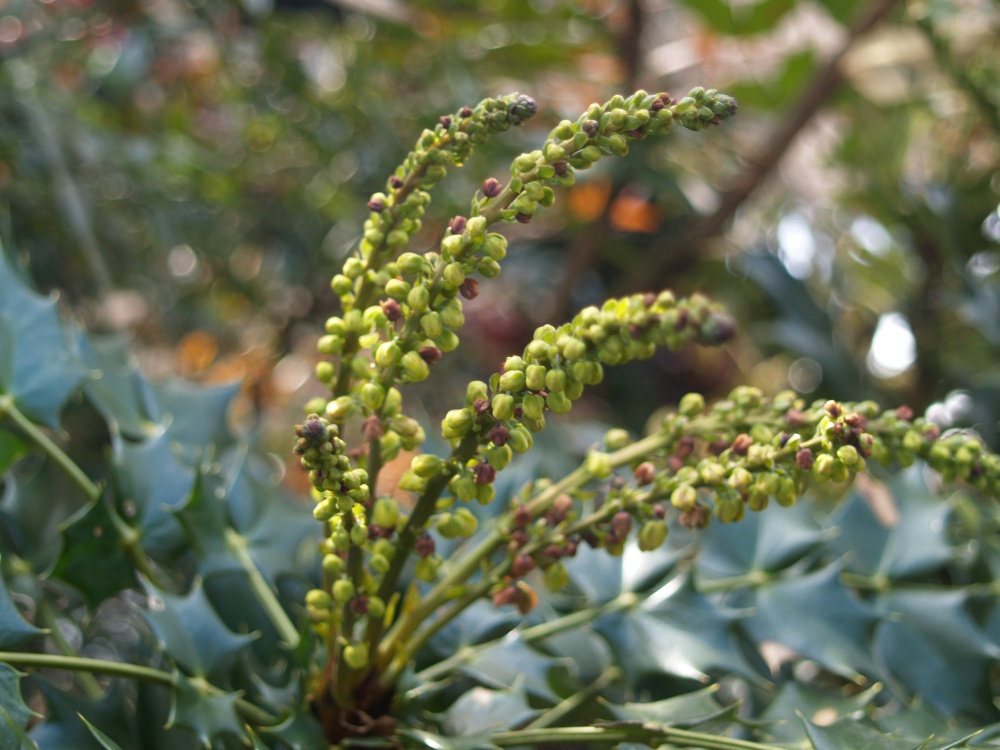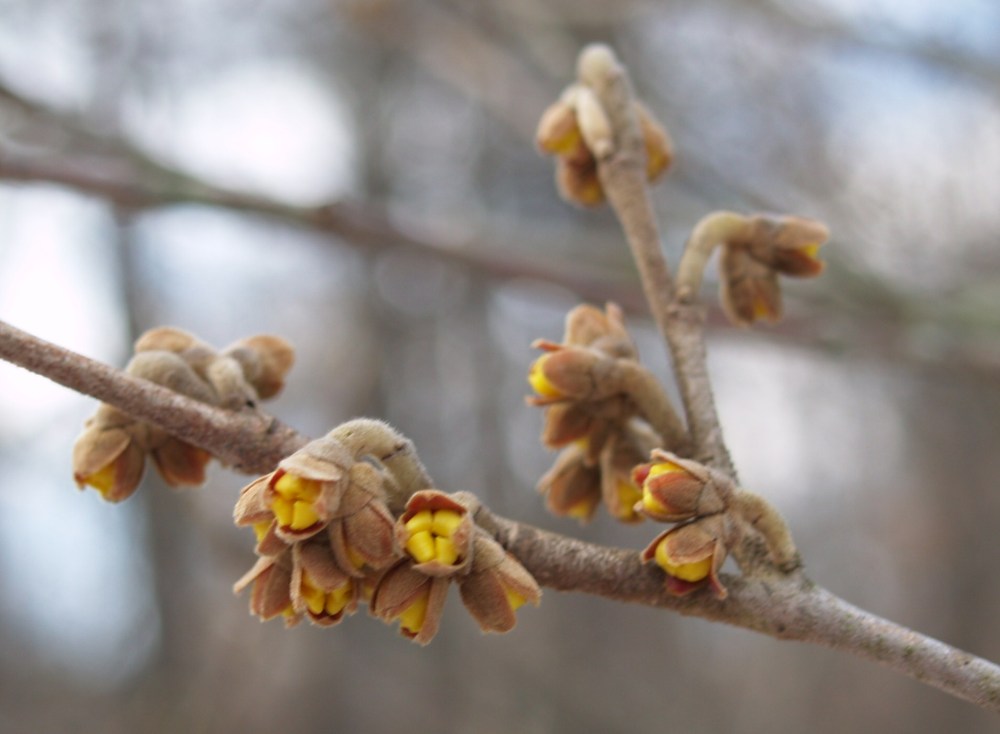This morning I discovered some remaining yellow blooms on a Mahonia ‘Winter Sun’ (below) that receives little sun in the winter months. Only the side of the evergreen that is most shielded from sunlight was flowering, and they are a bit meager, but now I can enthusiastically proclaim that there are blooms in the garden in all of the twelve months.
The mahonia begins to flower in November, and the peak bloom is usually late in the month extending into the middle of December. Those planted in sunny spots will flower earlier, and the blooms were gone by the start of the new year. In shaded areas the yellow panicles persisted into early January, but with snow and generally dreary weather I had not noticed the lingering blooms. With winter carrying on far too long, they are a welcome sight.
As is usual, several inches of snow blankets much of the garden weeks after neighboring properties have melted (except in heavily shaded areas), so that the early sprouting of snowdrops and crocus is hidden. Along the garden’s southern border (the shadiest area spring through autumn) the snow has melted as sun shines though tall poplars so that the hellebores are fully exposed, and so the plump buds are readily seen once the scattering of leaf debris is swept aside.
The buds of ‘Arnold’s Promise’ witch hazel (above) are showing evermore color, though the red flowering ‘Diane’ shows no sign that the buds have begun to swell. With warmer temperatures forecast for the next week both will progress more quickly, and provide further evidence that spring is truly just around the corner.
The furry catkins at the tips of branches of the black stemmed variegated pussy willow (below) have opened, and as February moves along they will continue to be more evident. The pussy willow is a wretched plant, awkwardly spreading to at least fifteen feet, and the variegated foliage is not obvious, but it is planted practically in standing water at the back property line, so for this difficult spot it is a splendid choice.
With only a few weeks remaining until spring arrives in earnest these are small consolations, but the snow will soon melt and I’ll rejoice in the snowdrops and hellebores, early iris and crocus.
Dave….Seems that mid-late Feb has always been a good time for me to cut back a few of the tall, spindly shoots from our nandina bushes. It generates wonderful new growth each year, and keeps the bushes from going crazy. Can you advise on the best time to fertilize them, and what type is best. These are old-fashioned, full size bushes, not the “miniature” versions. Thanks.
My nandinas are allowed to grow quite wild. The only pruning I will do is when one of the canes flops about so that it blocks a path. I have not fertilized any of the plants in my garden since they were very young, so for many that is nearly twenty years without supplemental fertilizing.
In most soils fertilizer is not necessary, but if you are looking to force quicker growth then it is helpful. Otherwise, plants need additional nutrients only when they are obviously lacking, such as when foliage is off color. Early spring (March or early April) is the ideal time to apply a fertilizer.
Hi Dave,
Yesterday I found snow drops and hellebores blooming quite happily at the bottom of my garden! Spring will be here in no time!
Don’t tell me that. Mine remain snow covered, and it’s doubtful that I’ll have blooms before the month’s end. The warm temperatures this week should help push them along.
Love your very informative interesting blog. I’m in charge of my deer heavy neighborhood landscaping, buy much of our new product from Harpers’ Ferry/Alex location b/c of him and you . thank you for your help. Elisabeth Staro